Parkswatch has commented several times on the differences between our two National Parks and the evidence now suggests that they are going in two different directions, one generally positive the other disastrous. This was very evident from their Board Meetings which took place in September.
The agenda of the September Board Meeting of the Loch Lomond and Trossachs National Park Authority was threadbare (see here). This is a Board that has no idea of what it should be doing and no control over its Chief Executive. Had the chaos at the meeting (see here) been broadcast – in my view all non-departmental board meetings should be available as webcasts like the Scottish Parliament- it would have probably quadrupled the Park’s social media hits as ridicule spread across the internet. By contrast, at the CNPA meeting last Friday, there was not just a full and meaningful agenda (see here) but meaningful discussion (as I have found out from talking to two people who attended) and meaningful decisions.
New Convener elected
A decision that took me by surprise was the Board Convener election where Xander McDade was elected in place of Peter Argyle (see here). Xander is not only the youngest member of our National Park Boards by some way, he was also the youngest person ever to be elected to Perth and Kinross Council where he stood as an independent and took a seat from the SNP in 2017. While Perth and Kinross Council nominated him to the CNPA Board, earlier this year he was involved in a very public dispute with their Tory Leader, Murray Lyle, who removed him from two Council Committees (see here). Murray Lyle just happens to be the Perth and Kinross Councillor who sits on the Loch Lomond and Trossachs National Park Board and that, unfortunately, I suspect will make the LLTNPA even more reluctant to learn from the CNPA about how it could improve.
It seems from his record on Perth and Kinross Council to date (and the National Park where he has challenged planning recommendations from staff) that Xander McDade has the capacity to be brave, challenge decisions and take on those with power. Other Board Members were aware of this when they elected him. To me its a very positive sign that CNPA Board Members are able to think for themselves and what the National Park needs in the future. There are precedents for critical thinking in the CNPA, as with former Board Member Bill Lobban (see here), while Peter Argyle’s generous response to his defeat is also good for democracy. If Xander McDade’s election leads to the CNPA speaking out more and challenging the Scottish Government where necessary, for example about the resources that the Cairngorms really require or on the future of intensive grouse moor management, that could only be a good thing for our National Parks.
The A9 upgrade between Aviemore and Dalwhinnie
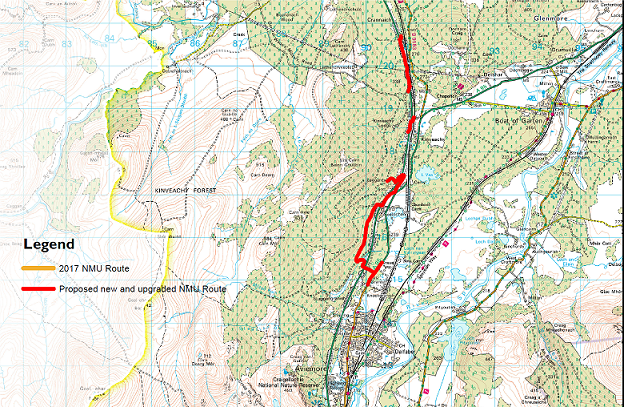
The Scottish Government and Transport Scotland’s project to dual the A9 by 2025 is a good example of where speaking out is required. CNPA staff have been trying for many months to get Transport Scotland to include a proper segregated multi-use path linking Aviemore and Carrbridge as part of the £3 billion dualling project. While this meets every policy objective in the book and indeed the objectives for the A9 – which basically include improving path networks – Transport Scotland has ignored all this and proposed a contorted route, using steep forest tracks in places (what happens when forest operations are happening?) and a busy road in others.
The assessment of CNPA was absolutely damning and they recommended the CNPA lodges a formal objection to the scheme:
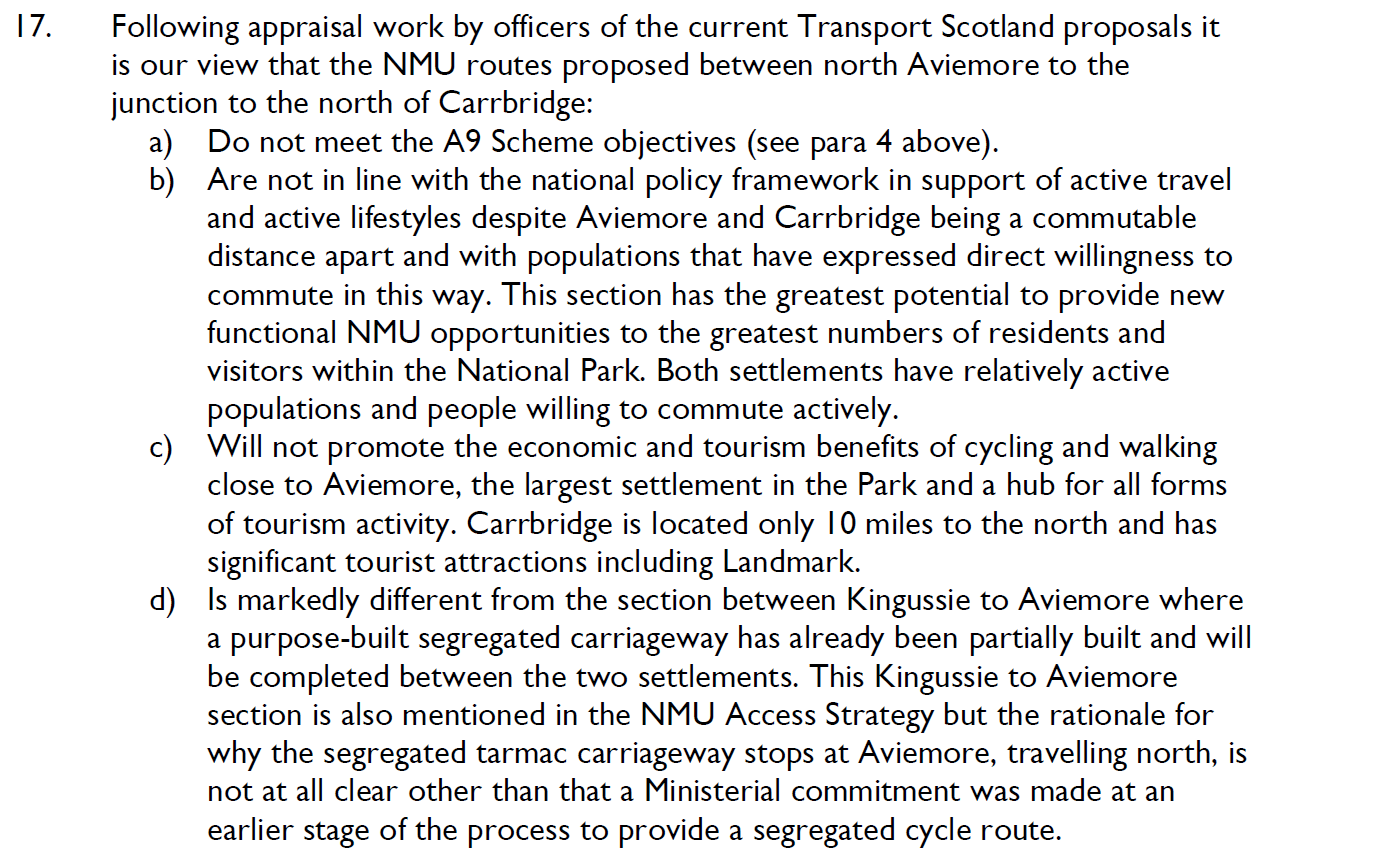
The staff concerned should be congratulated. There is an unwritten convention between Public Authorities, silently enforced by the civil service, which is that one public authority should not criticise another. This is terrible for democracy and for well informed decisions but it still take some courage to stand by principles and the public should be giving the CNPA all the support they can on this. The scheme is open for comments until 9th October at https://www.transport.gov.scot/publication/draft-orders-and-environmental-statement-dalraddy-to-slochd-a9-dualling/.
The CNPA has now on several occasions openly considered issues with the A9 dualling – a decision over which it had little control – which contrasts with the LLTNPA, where discussions about Transport Scotland’s proposal to upgrade the A82 along the east side of Loch Lomond mostly take place in secret. There is plenty for their Board to discuss, the issue is that they don’t do this, at least not in public.
This is not to say that CNPA could not do more to hold other public authorities to account. The new section of A9 south of Aviemore may include a new cycle path but Transport Scotland has not yet fulfilled another of the promises it made:
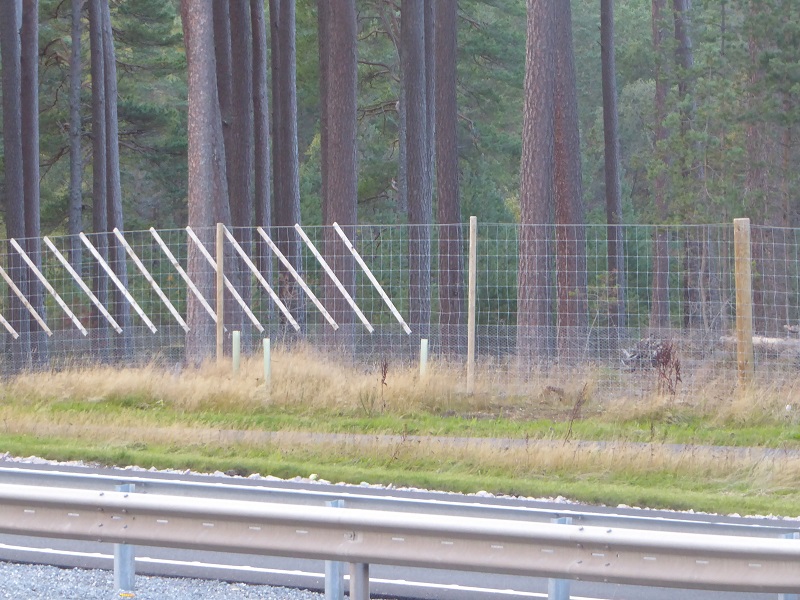
The evidence I saw on Tuesday shows that there are large swathes of fencing that have still not been marked over a year after it was installed:
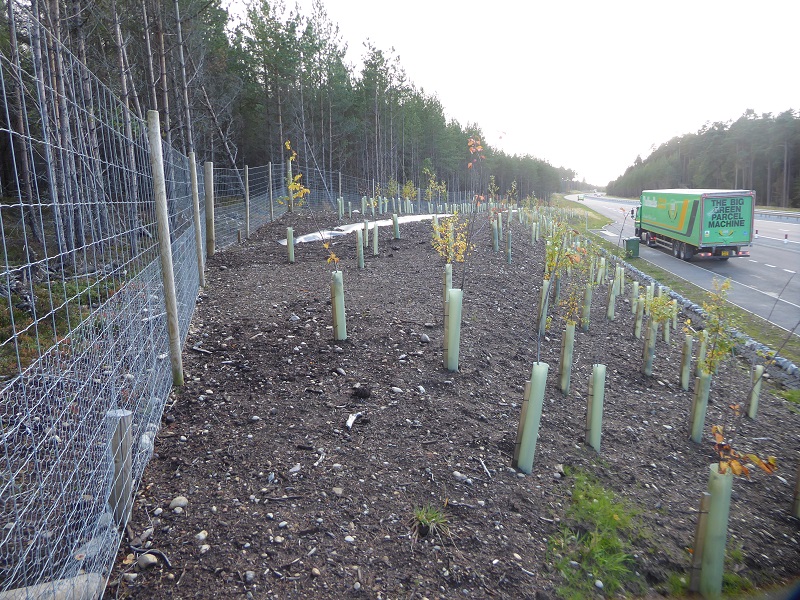
I would hope that under Xander McDade’s convenership, the CNPA Board and staff will be prepared to speak out on more issues such as this. It makes a mockery of their attempts to protect capercaillie.
Access infrastructure in Aviemore and Glenmore
While the LLTNPA has abandoned the Visitor Management Plans developed under Grant Moir (for east Loch Lomond and the five Loch area), on moving to become Chief Executive of the CNPA he has ensured that its Board Members at least continue to be very involved in the development of access infrastructure. This I believe is absolutely essential and the paper presented to the Board about proposals for Aviemore and Glenmore is a good example of this (see here).
Instead of ringing their hands or blaming others for the lack of action, as happens in the LLTNPA, the CNPA are proactively developing plans BEFORE the resources required to deliver them have been identified taking advantage of whatever money is around. So, using pots of money from Sustrans, they have now developed proposals for improving the path network around Aviemore which could cost anything from £6.7m to £17m to develop – sounds a lot of money until you consider the £3 billion A9 project. The point is though that by giving a lead and developing plans, that helps win support for projects and resources then tend to follow. It may take years under austerity for the CNPA to realise some of these plans, but keeping a positive vision alive is really important. I could not help think of the contrast with the LLTNPA Board Meeting where the paper of core path plans contained no framework for active new path development.
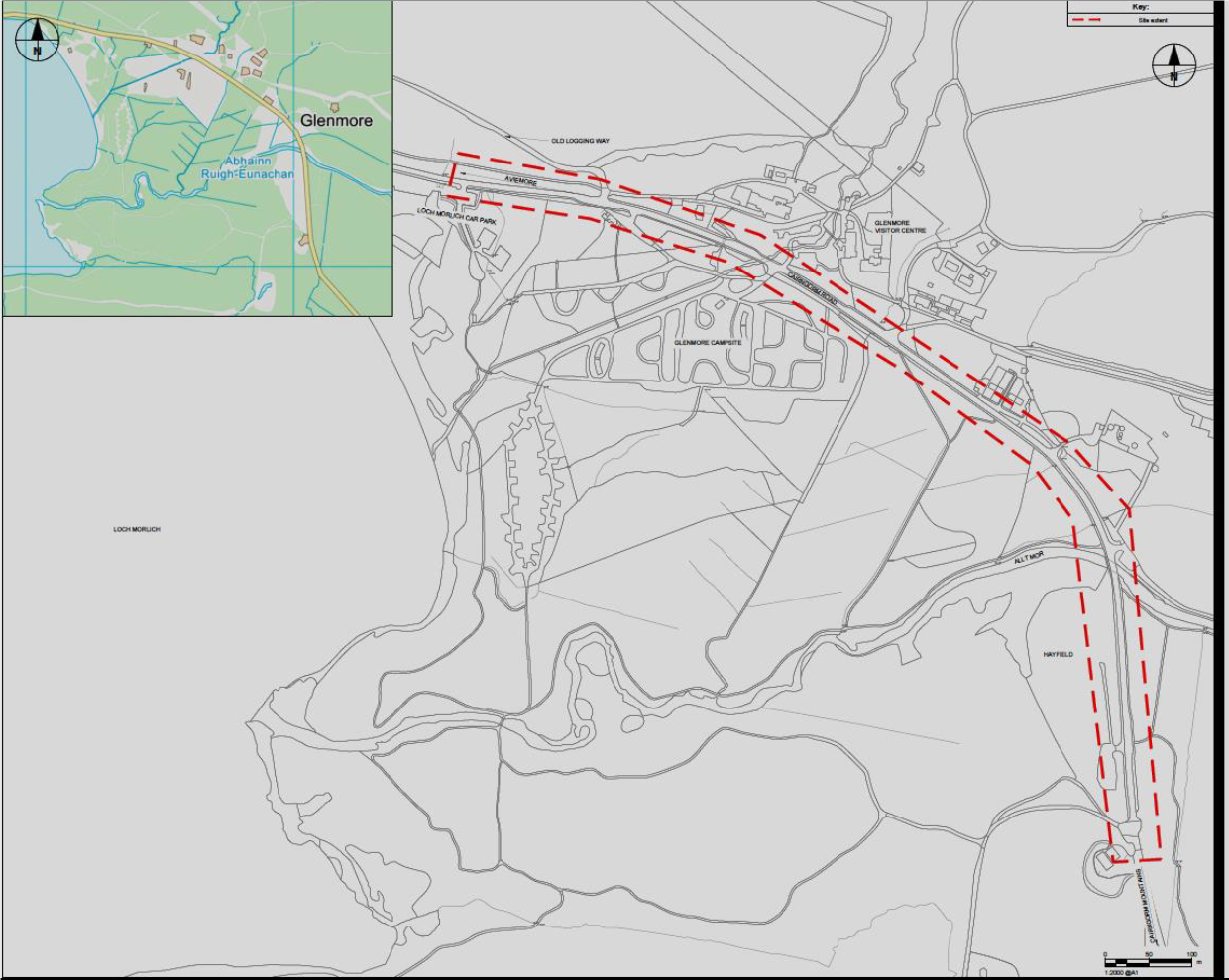
The paper also reported on a proposal for a new section of path along the road in Glenmore between the beach car park and the Hayfield and recommended the CNPA help fund this. Improving the connectedness of paths in Glenmore was one of the objectives of the Cairngorms and Glenmore Strategy, adopted two years ago, and a new section of path here will help contribute towards an off-road path running all the way from Aviemore to Cairngorm:
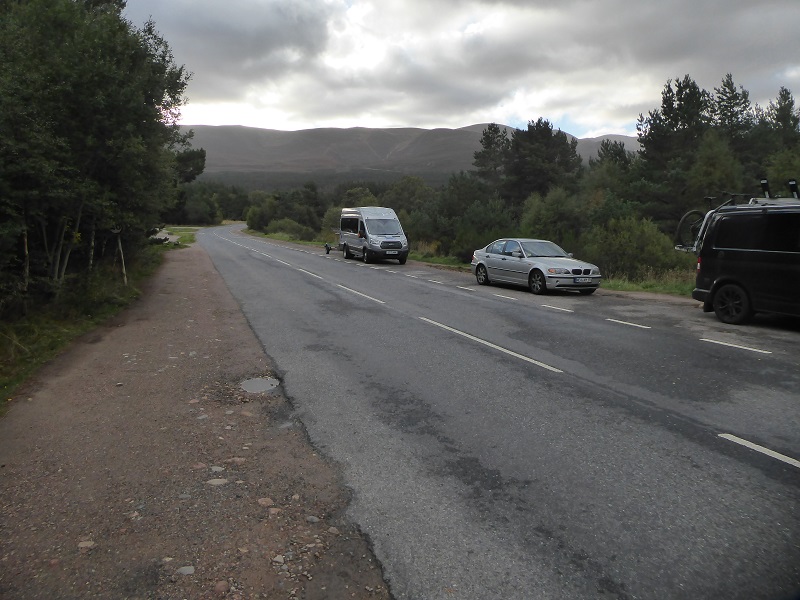
My one reservation about the proposal is its not clear if it also contributes to FCS’ agenda of trying to force everyone to stay in pay and display carparks – in other words if the path will be along the verge of the road, and will be used as a means to stop parking, or whether it will be segregated from it. There is simply not enough capacity at Glenmore for cars to park and, while walking and cycling paths may reduce demand slightly, until there are shuttle buses running up the glen, as happens in National Parks abroad, the right of people to park on the verge needs to be defended. There also needs to be a consistent plan for car park charges which takes in both Glenmore and Cairngorm, instead of FCS and Natural Retreats developing their own strategies.
Board scrutiny of staff
I will come back to the most strategically important paper on the agenda, the CNPA’s Forest Strategy. (The CNPA is way ahead of the LLTNPA in the number of strategies and plans it has developed – maybe there are too many, but at least the consultations open space for public and Board debate and have resulted in shifts in thinking and practice).
I would commend, however, anyone with the time however to read the 9 page Chief Executive’s report (see here). Its important because it allows Board Members (and the public) to see what is going on and then ask questions and hold them to account. Even if the LLTNPA really has nothing else to discuss, as a matter of principle it should be demanding its Chief Executive formally reports once a quarter about what staff are doing so they can be held to account. Instead it believes 3 meetings a year are sufficient to hold staff accountable and for the Board to operate in an open and transparent manner.
I hope I have shown that the contrast between the governance and effectiveness of the Boards and senior staff teams at the LLTNPA and the CNPA is growing ever wider. In a future post I will consider why this is the case.
I’ll duck for cover once I send this…….but having driven the new section of Dualled A9 south of Aviemore a good few times ……I am left wondering who are going to be the first on the adjacent Cycle Path to get flattened by an errant vehicle ? A savage comment, yes, but on the majority of the length, and other parts of the A9, there is no barrier between the Road and Cycle Path ! I have raised this on several Forums and just receive abuse ! And another related observation…….when there is an adjacent Cycle Path and Cyclists are on the main Carriageway…they should be prosecuted….because as a Motorist, and Cyclist in the past, I can only assume these individuals have a death wish and a large helping of selfishness towards their Families…..bearing in mind what could happen !! I’ll duck now !!
No need to duck George, where there is a segregated bike line running along a dual carriageway or other fast road it should be separated by a crash barrier. In relation to your point about cyclists on roads, I would agree that where there is a tarmac segregated path track alongside, cyclists should be using that track: in many cases however, and the proposals for Aviemore to Dalwhinnie are a case in point, the cycle path is so contorted that one would be better on the main road. This is a point that underlies the CNPA’s objection to Transport Scotland’s proposals in this case I think and is a reason why when I cycle into town from where I stay in Glasgow that I use the main road rather than a new segregated bike lane that takes a winding route would take me twice the time…………………….
In terms of best practice in river and fisheries management I would expect CNPA to be at least 40 years ahead of LLTNPA. The whole of the Scottish fisheries knows “The Loch Brigade” couldn’t manage a fish supper or keep a goldfish. We’re Tombstone Territory for salmon. I’ve worked in a care home. Strangely, you really can have a fairly reasonable, enjoyable and intelligent conversation with the mentally deranged. Try that with LLTNPA or WDC and let us know how far you get! They’ll have you chewing thistles and spitting feathers.